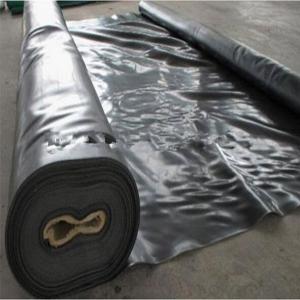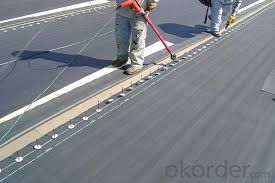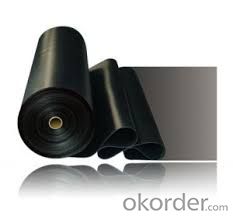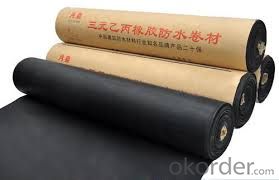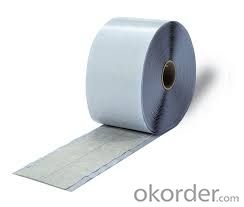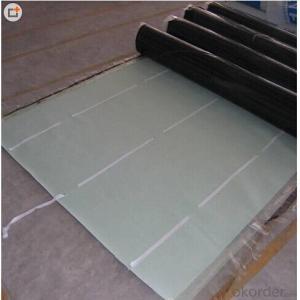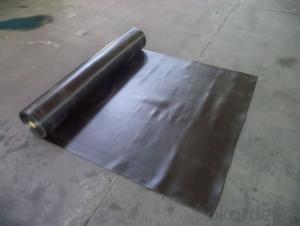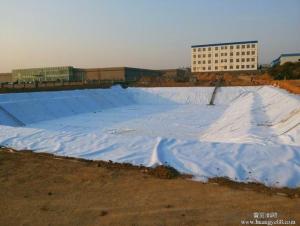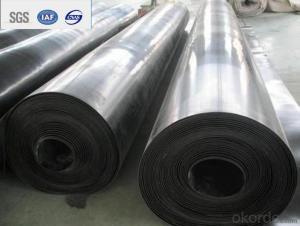1.0mm 1.2mm 1.5mm 1.8mm 2.0mm EPDM Waterproof Membrane For Your Reference
- Loading Port:
- Shanghai
- Payment Terms:
- TT OR LC
- Min Order Qty:
- 1000 m²
- Supply Capability:
- 200000 m²/month
OKorder Service Pledge
OKorder Financial Service
You Might Also Like
Product description
EPDM is a world-recognised popular waterproofing material in the recent thirty years. Hongyuan adopts the world−advanced equipment of cold feeding extrusion and continuous vulcanization technology. With the best performance among high polymer waterproof materials, EPDM is of exceptional elasticity and will not split or crack under normal building movement.
Application Scope
Waterproofing, anti-seepage and moisture proof of side walls of basements, baseboards, head plates and roofs.
Advantagee
1.Excellent anti aging performance ,service life up to 50 years.
2.High extension rate,high tensile strength ,small size changes at heat treatment.
3.Good plant roots penetrability resistance and can be made waterproofing layer of planting roof.
4.Special modified molecular structure ,effectively resolving the current domestic and foreign glue joint problem.
5.Good low temperature flexibility ,and good performance of adapting to ambient temperature changes.
6.Convenient application ,solid joint ,no environment pollution.
7.Chemical corrosion resistance ,can be used for special occasions.
8.Good anti-perforated.
Storage:
Different types or specifications of products should be separated, not mixed.
Keep it dry and ventilated, protected from the sun or rain.
Storage temperature should never be higher than 45 °C. Pile up the membranes flatwise whose stockpile height never exceeds five layers. One layer is guaranteed if it is placed vertically.
Prevent it from inclination or In the process of transportation, it should be lying in case of inclination or lateral pressure. If necessary, cover it with felt-cloth.
Storage time is at least one year from manufacture date on if the product is under normal operation of storage.
Advantages
Technical Parameters
Item | Index | ||||||
1 | Thickness of resin layer of the middle fabric ,mm≥ | - | - | 0.40 | 0.40 | 0.40 | |
2 | Tensile performance | Max tensile strength,N/cm ≥ | - | 120 | 250 | - | 120 |
Tensile strength,NPa ≥ | 10 | - | -10 | - | - | ||
Max elongation% ≥ | - | - | 15 | - | - | ||
Breaking elongation % ≥ | 200 | 150 | - | 200 | 100 | ||
3 | Heat treatment size change rate%≤ | 2.0 | 1.0 | 0.5 | 0.1 | 0.1 | |
4 | Cold bonding | -25°c No cracks | |||||
5 | Watertightness | 0.3mPa,2h waterproof | |||||
product show
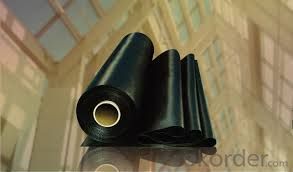
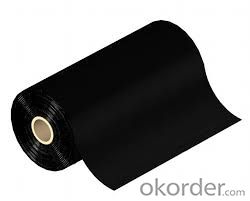
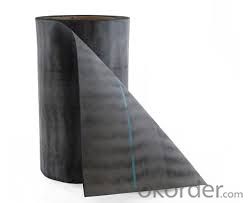
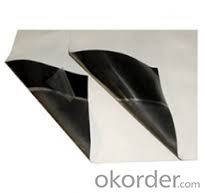
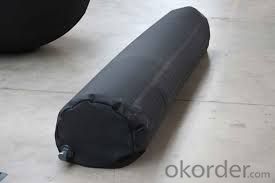
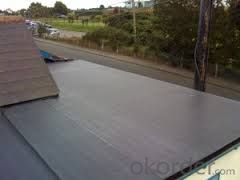
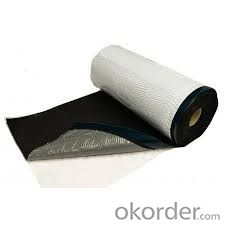

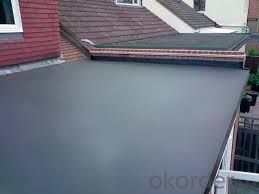
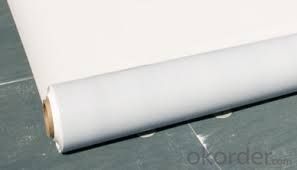
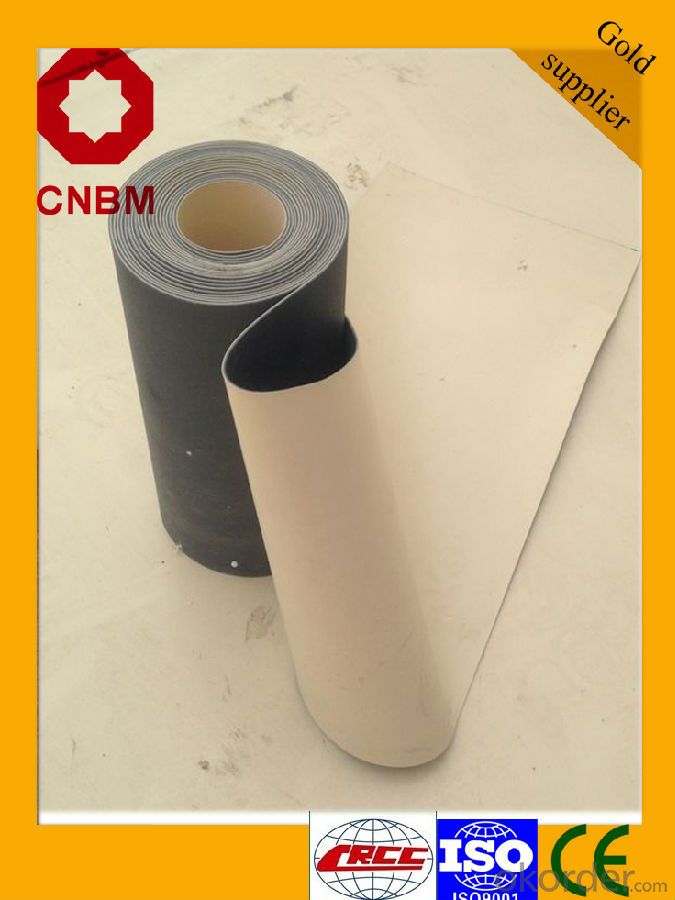
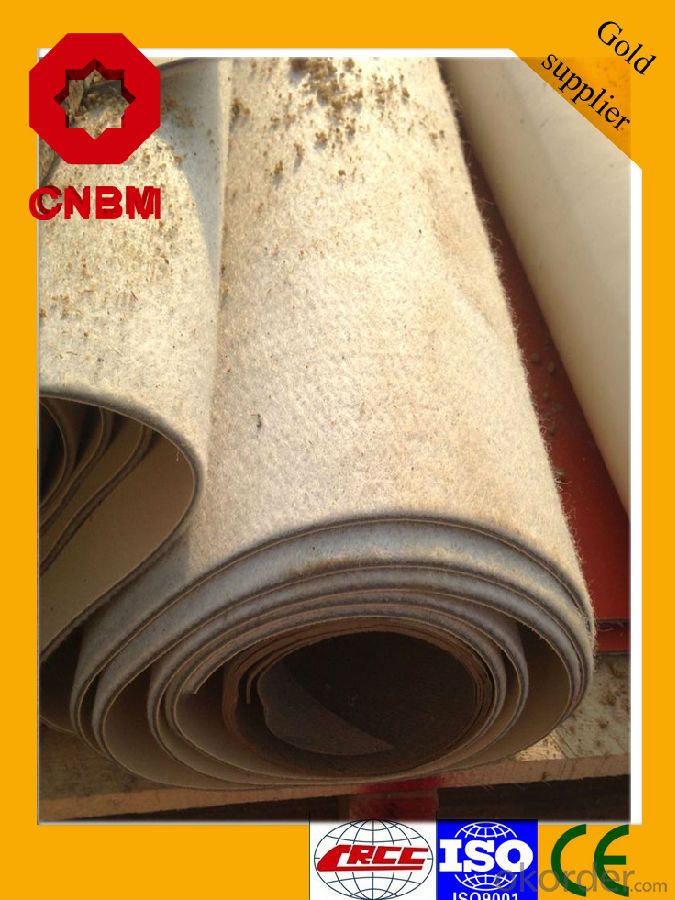

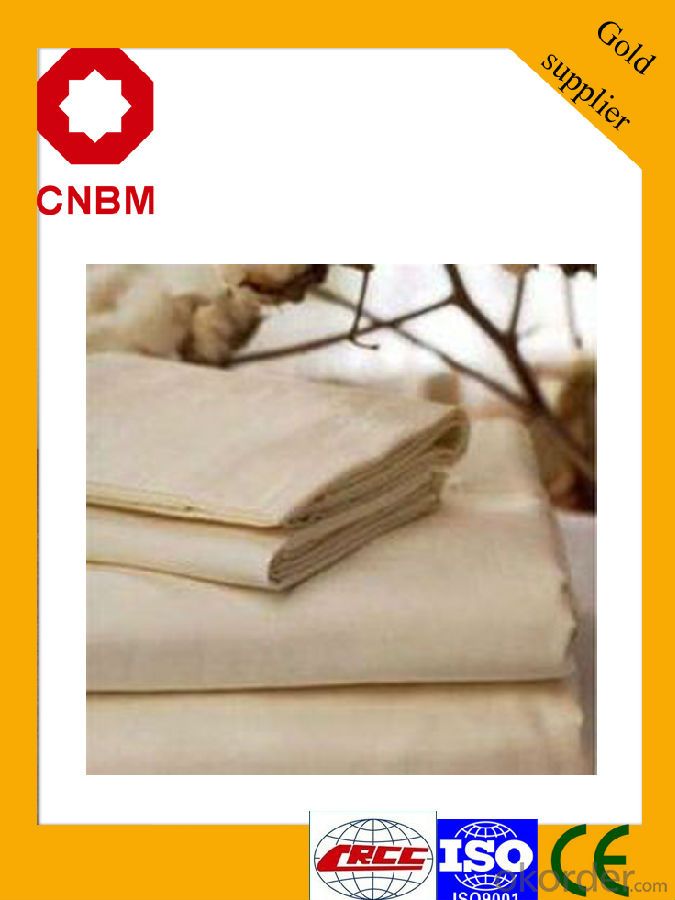
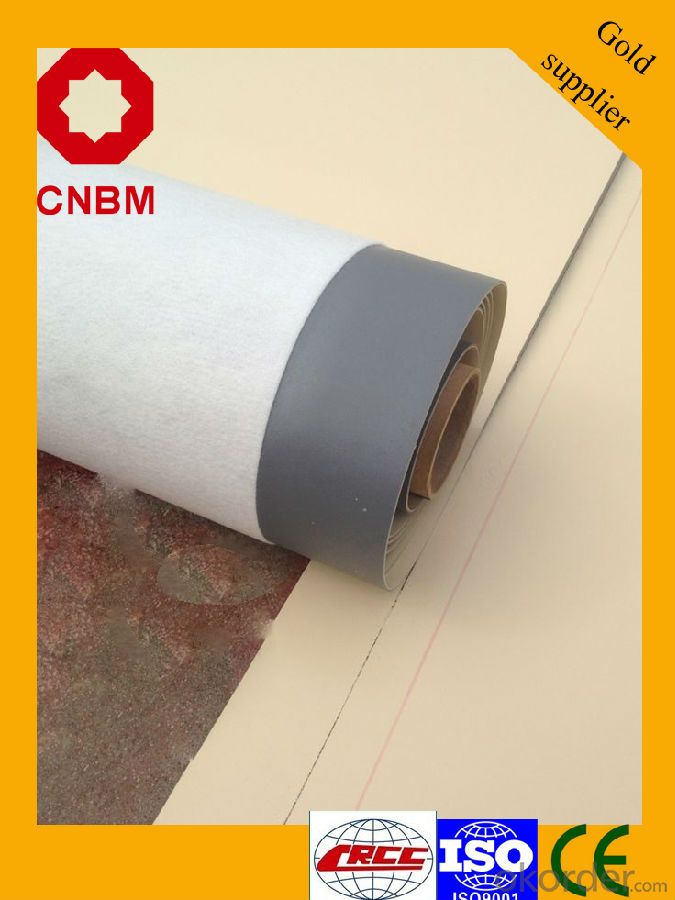
FAQ
Q: What's the de6abf1fe186f8d58506cbcfe46eed814d.jpglivery time ?
A: 3-5 days for 1-600 rolls, 10-15 days for container.
Q: What's the payment terms ?
A: TT/LC
Q: How do you make replacement with quality problems ?
A: New replacement will be packed into your next order or send to you directly after receive video or photo about quality problems.
- Q: Can a waterproofing membrane be used in bathrooms?
- Indeed, bathrooms can benefit greatly from the utilization of a waterproofing membrane. It is strongly advised to employ such a membrane in bathrooms as a preventive measure against water-related harm and leakage. Typically, this membrane is applied to both the walls and floors, establishing a protective barrier that inhibits water infiltration, subsequently averting structural deterioration or the proliferation of mold. This is particularly crucial in areas of heightened water exposure, such as showers and the vicinity of bathtubs. These waterproofing membranes are engineered to endure moisture and offer enduring safeguarding, thereby assuring the soundness of the bathroom and prolonging its longevity.
- Q: Can a waterproofing membrane be used on precast steel surfaces?
- Yes, a waterproofing membrane can be used on precast steel surfaces. Waterproofing membranes are designed to provide a protective barrier against water infiltration, and they can be applied to a variety of surfaces, including precast steel. The membrane acts as a waterproof layer, preventing water from penetrating the surface and causing damage. It is important to ensure that the surface is properly prepared and cleaned before applying the membrane to ensure proper adhesion and effectiveness. Additionally, it is recommended to consult with a professional waterproofing contractor to determine the best type of membrane and application method for the specific precast steel surface.
- Q: Is a waterproofing membrane necessary for all types of construction?
- A waterproofing membrane is not necessary for all types of construction, but it is highly recommended for certain types of projects. The need for a waterproofing membrane depends on several factors, including the location and purpose of the construction, the materials used, and the potential exposure to water or moisture. In general, a waterproofing membrane is essential in areas where water intrusion is a common occurrence, such as basements, foundation walls, roofs, bathrooms, and areas with high humidity levels. These areas are susceptible to water damage, which can lead to structural issues, mold growth, and deterioration of building materials. Waterproofing membranes provide an effective barrier against water penetration, preventing any potential damage caused by moisture. They are typically made from materials like asphalt, rubber, or polyethylene, and are applied as a thin layer over the surface to create a watertight seal. Additionally, some membranes can also provide insulation benefits, further enhancing the energy efficiency of the construction. While a waterproofing membrane may add to the construction cost, its benefits outweigh the expenses in the long run. It helps to protect the structural integrity of the building, prolong its lifespan, and prevent costly repairs or renovations due to water damage. However, it is important to note that not all construction projects require a waterproofing membrane. For example, buildings located in arid regions or areas with minimal rainfall may not require extensive waterproofing measures. Similarly, certain types of construction, such as open-air structures or temporary installations, may not necessitate a waterproofing membrane. Ultimately, the decision to incorporate a waterproofing membrane into a construction project should be based on a thorough assessment of the specific conditions, risks, and requirements of the project. Consulting with a professional architect or engineer can help determine whether a waterproofing membrane is necessary and which type would be most suitable for the construction.
- Q: Are waterproofing membranes resistant to impact damage?
- Waterproofing membranes offer protection against water infiltration and typically resist impact damage to varying degrees. The level of impact resistance depends on the specific membrane type and quality. Generally, high-quality waterproofing membranes are designed to endure normal impacts and stresses that occur during installation and use. They are manufactured using durable materials, like modified bitumen, rubberized asphalt, or synthetic polymers, which enhance their strength and resilience. Although waterproofing membranes can withstand minor impact damage, they are not completely impervious to more significant impacts. Dropping heavy objects or sharp objects falling onto the membrane can potentially cause punctures or tears, compromising the integrity of the waterproofing system. This can result in water infiltration and potential structural issues. To enhance impact resistance, additional protective measures can be taken, such as installing a protective layer or using reinforced membranes. These extra layers or reinforcements provide an additional barrier against impact damage, ensuring the long-term performance and durability of the waterproofing system. In conclusion, while waterproofing membranes generally resist impact damage, it is crucial to handle them with care during installation and avoid unnecessary impacts that could potentially compromise their integrity.
- Q: Can a waterproofing membrane be used in fountains or water features?
- Yes, a waterproofing membrane can be used in fountains or water features. Waterproofing membranes are designed to protect surfaces from water penetration and are commonly used in various construction applications, including fountains and water features. These membranes create a barrier that prevents water from seeping into the underlying structure, ensuring the longevity and functionality of the fountain or water feature. Additionally, waterproofing membranes can be applied to different materials, such as concrete, stone, or metal, making them versatile for use in various designs and styles of fountains or water features.
- Q: Can a waterproofing membrane be used for plaza decks?
- Yes, a waterproofing membrane can be used for plaza decks. Plaza decks are typically outdoor spaces that require protection from water infiltration to prevent damage to the underlying structure. Waterproofing membranes are designed to create a barrier that prevents water from seeping into the deck and causing issues such as leaks, deterioration, and structural damage. These membranes are often made of materials such as bitumen, rubber, or polyurethane, which are highly resistant to water penetration. By installing a waterproofing membrane on a plaza deck, it ensures that the deck remains watertight and protects the integrity of the entire structure. Additionally, these membranes can also provide added benefits such as UV resistance, durability, and ease of maintenance, making them an ideal solution for plaza decks.
- Q: Can a waterproofing membrane be used for balconies and terraces?
- Yes, a waterproofing membrane can be used for balconies and terraces. Waterproofing membranes are often used in construction to protect these outdoor spaces from water damage and leakage. They provide an effective barrier against moisture and ensure the durability and longevity of balconies and terraces.
- Q: Can a waterproofing membrane be used in kitchens?
- Yes, a waterproofing membrane can be used in kitchens. In fact, it is highly recommended to use waterproofing membranes in areas prone to moisture and water exposure, such as kitchens. These membranes are designed to create a barrier against water and prevent it from seeping into the underlying structure, protecting it from damage. They are commonly used on floors, walls, and even countertops to ensure a watertight seal and prevent water damage, mold growth, and other issues. Additionally, waterproofing membranes can also help with soundproofing and provide added durability and longevity to the kitchen surfaces.
- Q: Can a waterproofing membrane be applied to metal surfaces?
- Metal surfaces can indeed benefit from the application of a waterproofing membrane. These versatile membranes are suitable for use on a range of materials, including metals. Their primary purpose is to safeguard metal surfaces against corrosion and water-related harm. By acting as a barrier, these membranes effectively ward off moisture infiltration, preventing rust and deterioration. Moreover, they can even enhance insulation and bolster the overall durability of the metal surface. To guarantee secure adhesion and enduring protection, it is crucial to select a waterproofing membrane explicitly designed for metal surfaces.
- Q: Can a waterproofing membrane be used for water tanks?
- Yes, a waterproofing membrane can be used for water tanks. Waterproofing membranes are specifically designed to prevent water leakage and can be applied to various surfaces, including water tanks, to create a watertight seal and protect against water damage.
Send your message to us
1.0mm 1.2mm 1.5mm 1.8mm 2.0mm EPDM Waterproof Membrane For Your Reference
- Loading Port:
- Shanghai
- Payment Terms:
- TT OR LC
- Min Order Qty:
- 1000 m²
- Supply Capability:
- 200000 m²/month
OKorder Service Pledge
OKorder Financial Service
Similar products
Hot products
Hot Searches
Related keywords
